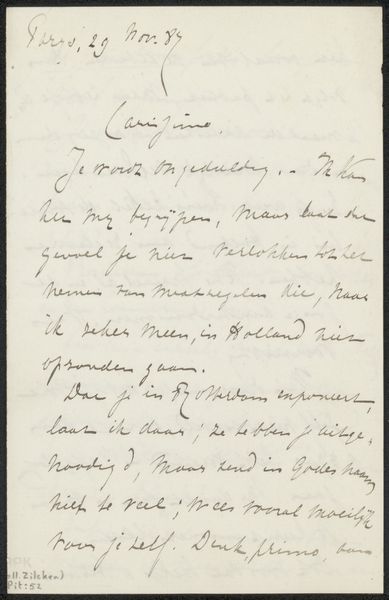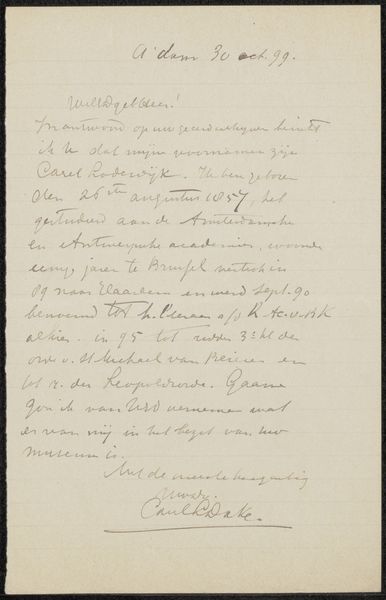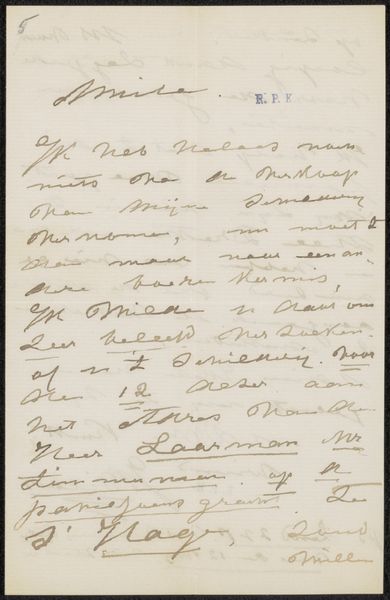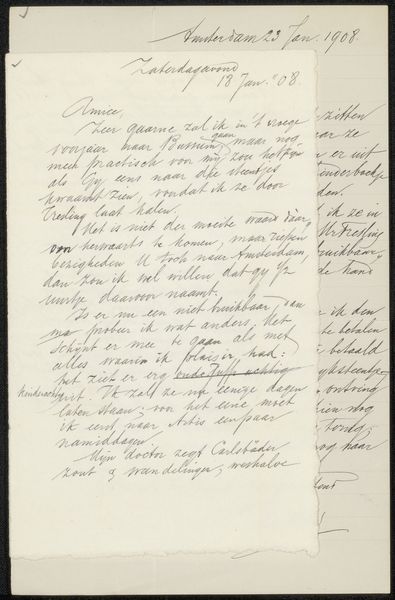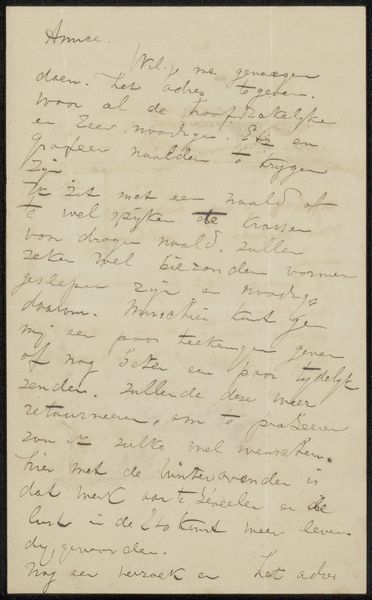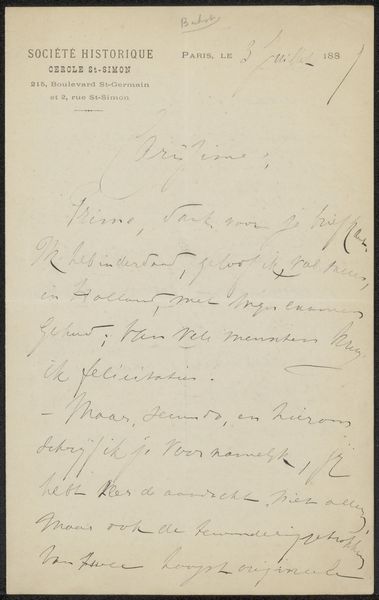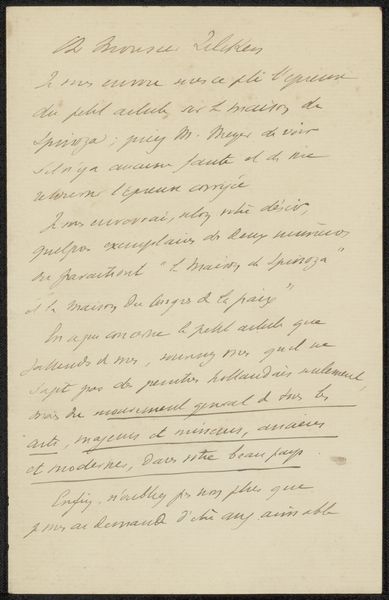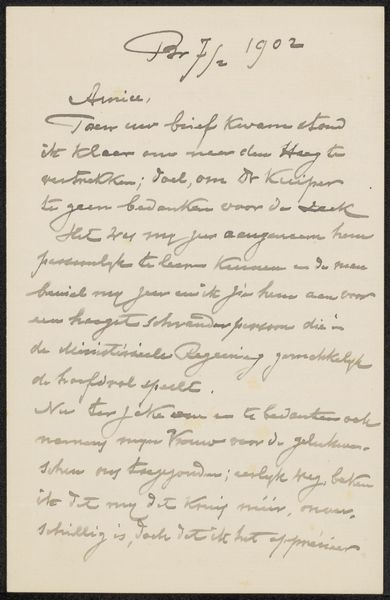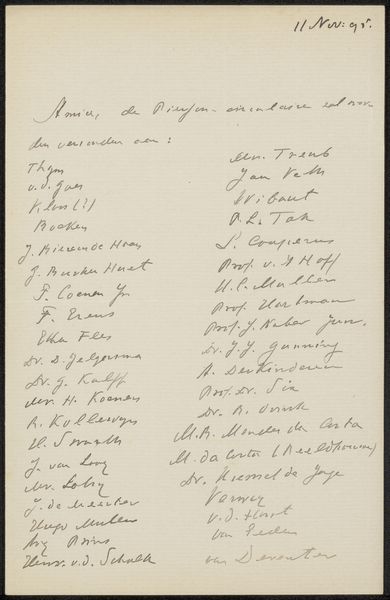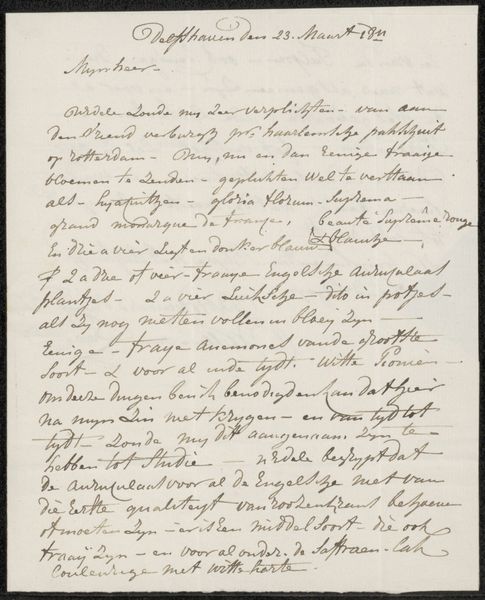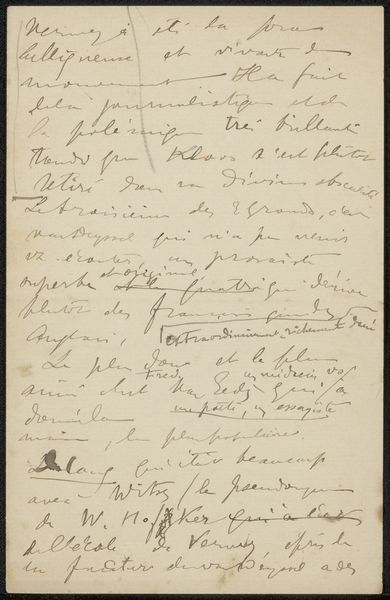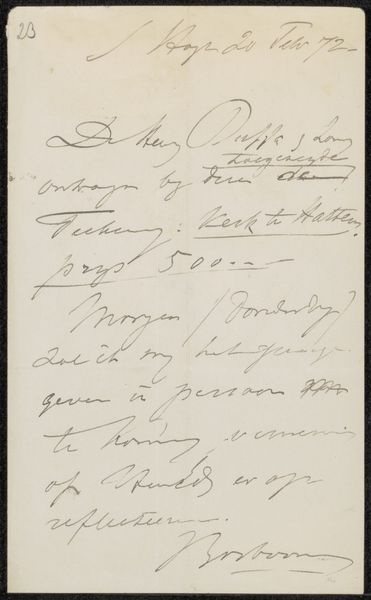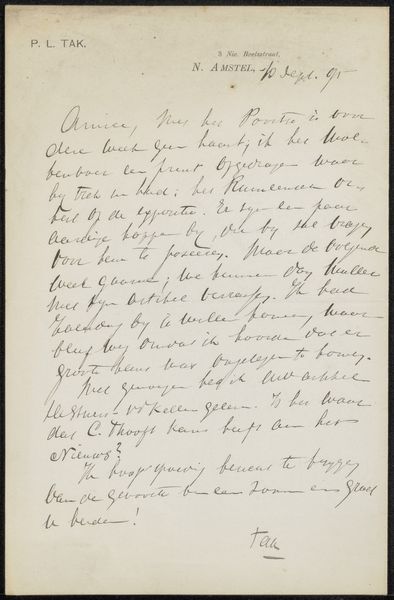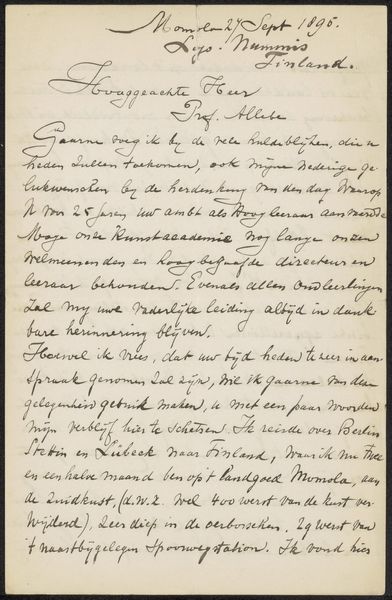
drawing, paper, ink, pen
#
drawing
#
ink drawing
#
pen drawing
#
paper
#
ink
#
pen
#
calligraphy
Copyright: Rijks Museum: Open Domain
Editor: Here we have "Brief aan Philip Zilcken," possibly from 1885, by Adriaan Pit, rendered in ink on paper. It strikes me as incredibly intimate, almost voyeuristic to be reading someone's personal letter like this. How do you interpret this work as more than just a document? Curator: That feeling of intimacy is key. Consider how letter writing was a primary means of communication, especially amongst intellectuals and artists. This isn’t merely conveying information; it's performative. The act of writing itself, the deliberate choice of words, becomes an extension of the author's identity. Do you think the legibility, or lack thereof, adds another layer to its message? Editor: I hadn't thought about that! The handwriting is hard to decipher, which does make it feel more private, more like something I shouldn't be seeing. It almost creates a barrier between me and the contents. Curator: Precisely. Illegibility, even unintentional, can function as a form of resistance. Who is allowed access? Who can decode the message? Perhaps Pit wasn’t striving for perfect clarity, subtly excluding those outside his immediate circle. What does it say that the text itself has so many possible interpretations for the modern viewer? Editor: So, it's like the act of viewing becomes an act of translation, trying to understand the historical and personal context. The labour that one invests can affect their interpretation of the letter. Curator: Exactly. The effort required mirrors the effort it took to create and receive such correspondence in the late 19th century. This challenges the quick consumption of art we’re so accustomed to today, don't you think? It forces us to slow down. Editor: That makes me appreciate it more. I thought it was just a letter, but it reflects a lot about communication and who gets to participate. Curator: And hopefully how we can interrogate art from different perspectives. Now, instead of simply viewing an artwork for aesthetic appreciation, you understand its ability to challenge the politics of access and exclusion.
Comments
No comments
Be the first to comment and join the conversation on the ultimate creative platform.
